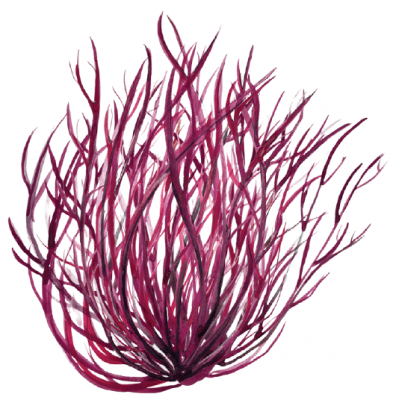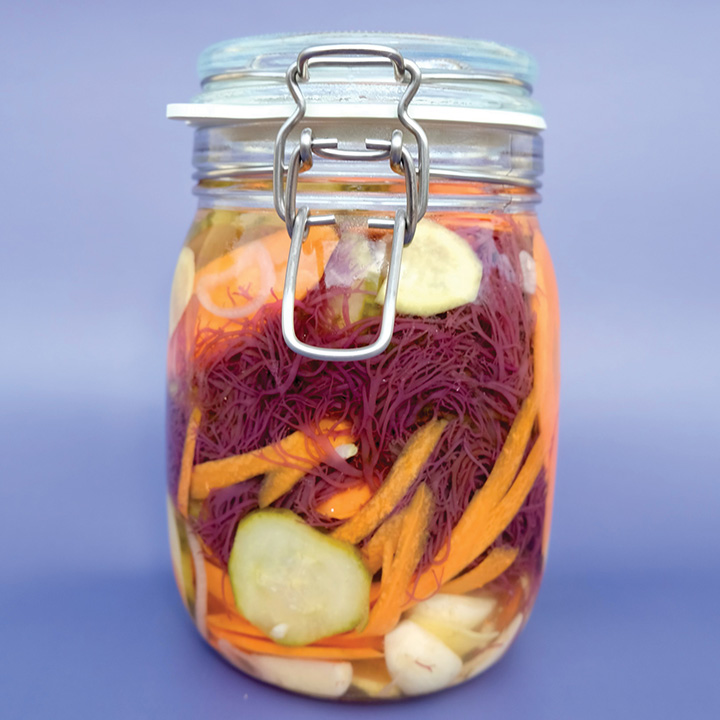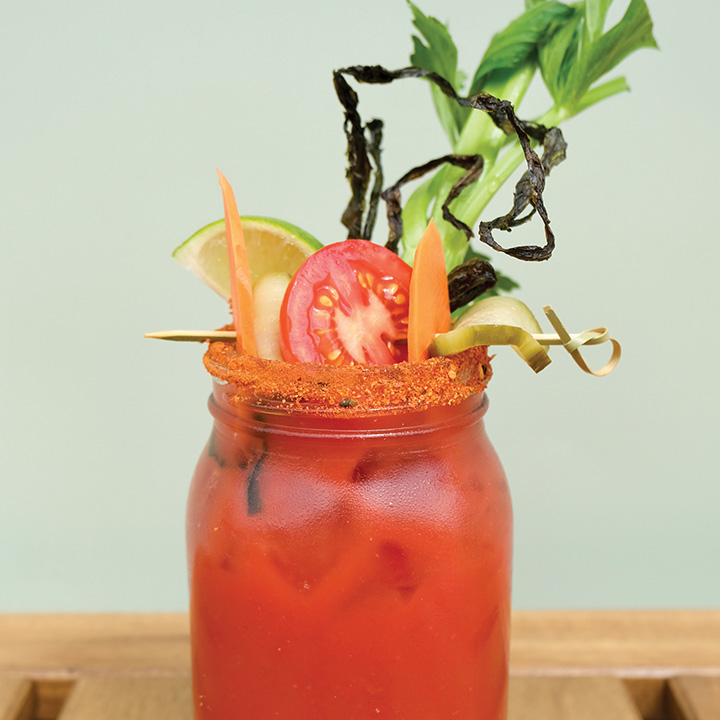
Profile
Ogo (Gracilaria spp.)
Ogo, also known as limu manauea in Hawai'i, is a bushy, branching red seaweed found in almost all the world's oceans. Different climates produce various ogo types, with branches ranging from deep purple, thin, and string-like to light orange, thick, and crunchy. Besides its culinary uses, ogo is harvested for agar, a thickening agent used in a wide range of foods including ice cream, and in biomedical applications.
Highlighting ogo's deep roots in Hawai'i's history and culture, limu manauea has been an integral part of the traditional Hawaiian diets since time immemorial. The knowledge of gathering and preparing limu has been passed down through generations, primarily among Hawaiian women. Limu manauea is often used in ceremonies, religious rituals, and medicine.
Today, a variety called "long ogo" (Gracilaria parvispora) is cultivated in Hawai'i in a mixed-species aquaculture system. Baskets of long ogo float on the surface of fish ponds and take up nutrients from the fish. Other species of Gracilaria occur and are farmed on the US west and east coasts making this crunchy delicacy available on the mainland as well as Hawai'i.
 Flavor Profile (notes and cooking tips)
Flavor Profile (notes and cooking tips)
Floral, clean, medium umami, light bitterness, vegetal, refreshing
Texture
Crisp, al dente, delicate, lacey, crunchy, distinct bite reminiscent of masago
Preparation Tips
Fresh ogo is often found with other types of algae hitchhiking on its branches. This algae is perfectly edible, but if you prefer, you can separate the algae for future composting. Your plants will love it!
To preserve crunchiness and seal in flavor, blanch in pot of boiling water for 1-2 minutes, then immediately transfer to ice bath for 5 minutes.
Where is it Farmed?
Land-based tanks in California, Florida, and Connecticut, or floating baskets on fish ponds in Hawaii.
Harvest Season
Year-round
Nutrition
Low in calories (45 cal per pound), rich source of potassium, iron, calcium, magnesium and iodine.
Storage Tips
Refrigerate and consume fresh ogo within 7 days of harvest. To prolong shelf life, freeze or dry in dehydrator and store in a cool, dry place.
Environmental Benefits
Absorbs CO2 from the ocean and produces oxygen, provides food and shelter for marine life. Wild ogo is an indicator for the health of an ecosystem; unhealthy ogo can be a sign of pollution or unstable ocean temperatures.
Recipes

Ginger Garlic Pickled Ogo
Recipe by Claire Bastarache, Ogo sourced from Monterey Bay Seaweeds
Equipment: 1 quart canning jar
Ingredients
- 11/2 cups of fresh ogo
- 1 cup sliced carrots
- 1 cup sliced cucumbers
- ½ cup sliced onions
- 8 cloves of garlic
- 2" chunk of ginger root - peeled and sliced
- 2 tsp of peppercorns
Pickling Liquid
- 1 cup rice vinegar
- 1 cup water
- 1 tbsp salt
- 5-7 tbsp agave
Directions
- Blanch fresh ogo for 1 minute.
- Combine pickling liquid ingredients in pot and bring to a boil.
- Layer the blanched ogo and prepared veggies in a 1-quart canning jar.
- Once the pickling liquid boils, carefully pour it over the veggies and ogo in the jar, ensuring everything is completely covered.
- Let the jar sit to cool before transferring it to the fridge.

Pickled Ogo Bloody Mary
Recipe by Claire Bastarache, Ogo sourced from Monterey Bay Seaweeds
Ingredients
- 32 oz of tomato juice - spicy or non-spicy
- 11/2 cup vodka (optional)
- 1 tbsp Worcestershire sauce
- 1 tbsp horseradish
- 1/2 cup ginger garlic pickled ogo juice
- 2 tbsp sugar kelp (optional)
- 1 lemon or lime juiced,
- 1/2 tsp cracked black pepper
- 1/2 tsp celery salt
- pinch red pepper flakes
Directions
- In a pitcher combine tomato juice base, vodka, Worcestershire sauce, horseradish, lemon or lime juice, and pickled ogo juice and mix until combined.
- For extra umami, blend 2 tbsp of sugar kelp with base, then strain through a mesh sieve.
- Let mix refrigerate until you’re ready to serve (alcohol optional)
- When serving, rim glasses with salt or tajin, and garnish with celery, pickled ogo veggies, olives, citrus, and any other toppings you love.